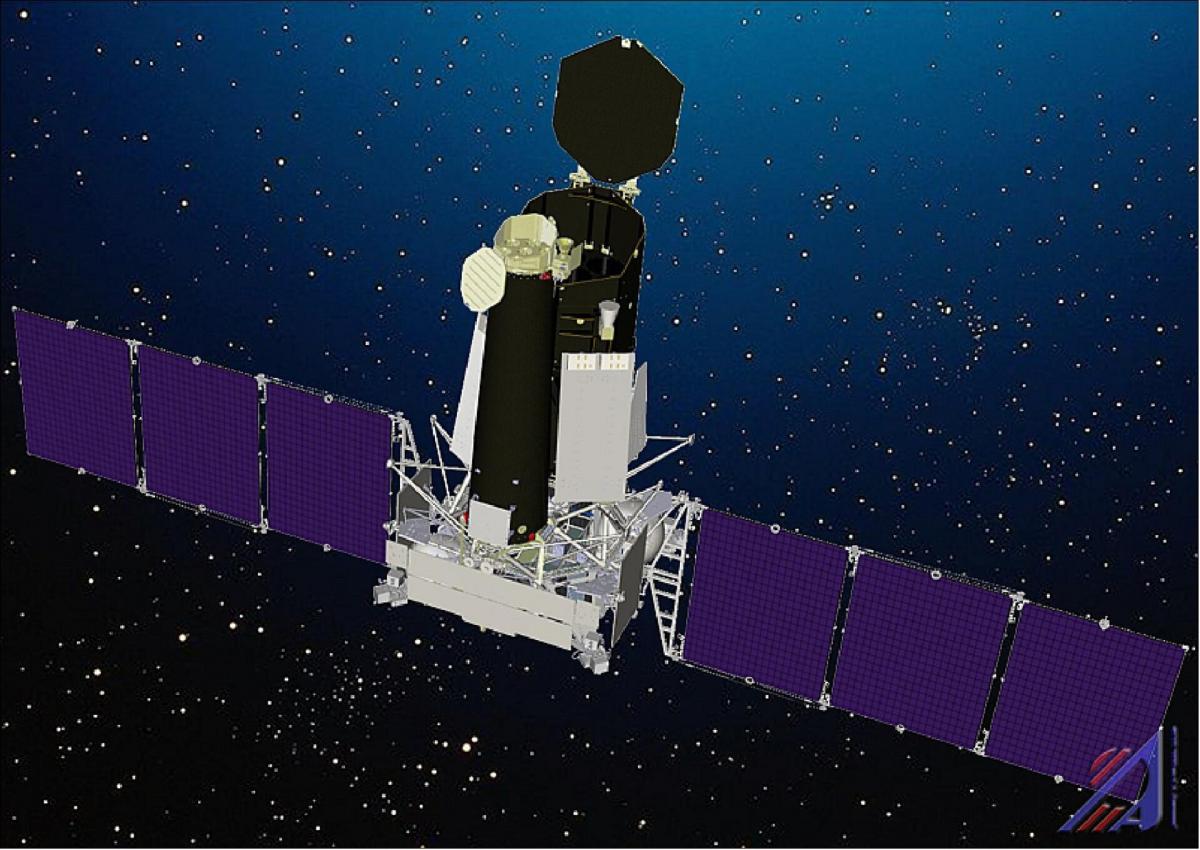ESA listens in on black hole mission
European and Russian specialists recently worked together to catch signals from an astrophysical observatory mission, now mapping X-ray sources in our galaxy and beyond, discovering previously unknown supermassive black holes.
In a joint technology demonstration conducted in April and May, ESA, Roscosmos, and the Space Research Institute of the Russian Academy of Sciences (IKI RAN) in cooperation with NPO Lavochkin used three of the European Space Agency’s deep space ground stations to download vital scientific data from the Spektr-RG spacecraft.

Illustration of the Spektr-RG spacecraft.
The Spektr-RG astrophysical observatory was developed by Roscosmos with participation from Germany led by the German Aerospace Center (DLR), and is currently operating in a halo orbit around a special point in space called the L2 Lagrange point, some 1.5 million km from Earth. From here, its goal is to map the entire sky in X-rays and identify new X-ray sources, such as supermassive black holes, across the Universe.

ESA antenna to keep NASA mission in sight.
ESA stations link up
This spring, the Russian ground stations normally used to communicate with Spektr-RG were in unfavourable geographic positions, and experts from ESA’s Estrack ground station network stepped in, working in close cooperation with colleagues at the Russian Complex for Receiving Scientific Information (RKPNI).

eRosita views two interacting galaxy clusters, A3391 and A3395.
ESA’s three 35 m dish antennas, located in Australia, Spain and Argentina, were used to establish a series of 16 communication passes with Spektr-RG, downloading 6.5 GB of science data.

Network map.
These included imagery generated by the mission’s two X-ray telescopes: the ART-XC instrument developed by IKI RAN and the eROSITA instrument, built and operated by the Max Planck Institute for Extraterrestrial Physics (MPE) in Germany.

Schiaparelli separating from Trace Gas Orbiter.
It was the first time that the Agency’s ground stations collected scientific data from a Russian spacecraft.
Low Earth orbit to deep space
The seven-station Estrack network is located on three continents and provides communication links to ESA spacecraft orbiting Earth, watching our Sun, observing deep into the Universe or exploring the inner Solar System.
They are centrally operated from the Agency’s ESOC mission control centre in Darmstadt, Germany, and they also support missions flown by NASA, China and Japan, as well as by European national space agencies on a cross-support basis.
You listen to ours, we listen to yours
This successful collaboration demonstrates how ESA and Roscosmos technologies can work together, showcasing the ‘interoperability’ of the two space agencies.
Later this year, a similar technology demonstration is planned during which a Russian ground station will simultaneously receive science data from two Mars missions: ESA’s Mars Express and the ESA-Roscosmos ExoMars Trace Gas Orbiter.
Both experiments lay the foundations for future collaboration between ESA and Roscosmos, including the possibility of a full ‘cross-support agreement’ for the mutual support of Russian and European science and exploration missions using each Agency’s ground stations.
Source: European Space Agency
- 299 reads
Human Rights
Ringing FOWPAL’s Peace Bell for the World:Nobel Peace Prize Laureates’ Visions and Actions

Protecting the World’s Cultural Diversity for a Sustainable Future

The Peace Bell Resonates at the 27th Eurasian Economic Summit

Declaration of World Day of the Power of Hope Endorsed by People in 158 Nations

Puppet Show I International Friendship Day 2020

